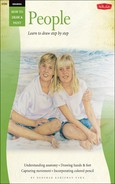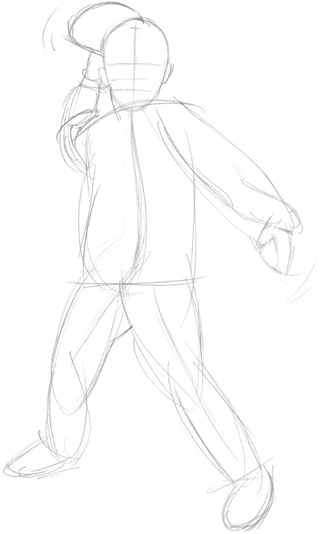Drawing children presents a unique challenge. To capture their actions, train your eye to assess the essential elements of the movement, and then quickly draw what you see. One way to rapidly record details is through a gesture drawing, a quick sketch establishing a figure’s pose. First determine the main thrust of the movement—or the line of action—from the head, down the spine, and through the legs. Then sketch general shapes around this line. As you can see here, a quick sketch is all you need to capture the main gesture—and you can always add details later.

1 To capture the gesture of these boys, first establish the lines of action; then block in the general shapes surrounding them. For the boy on the left, the line of action moves down his spine and through his left leg, where his weight is balanced. The boy on the right is kicking with his right leg—note the way the kick causes his body to bend forward in order to balance, curving the line of action at the base of his spine.
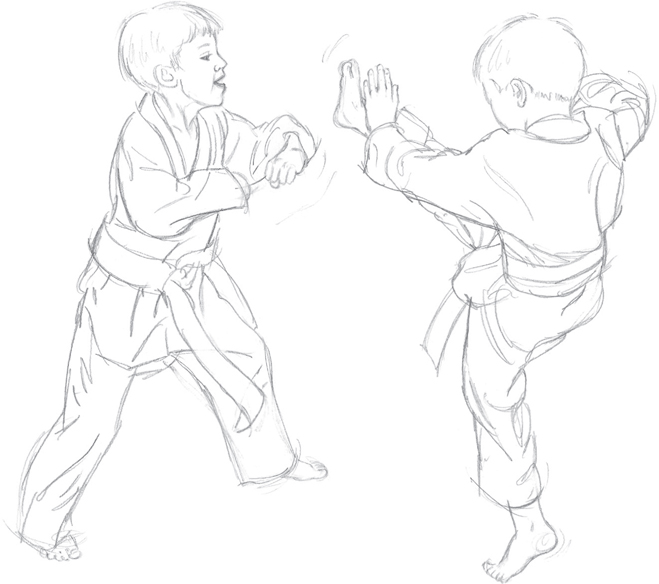
2 After placing the lines of action correctly and blocking in the basic shapes, add a few details on their heads, hands, feet, and clothing, keeping the lines loose. Karate uniforms are loose fitting, but you can see how the boys’ movements have pulled the fabric taut in some places.
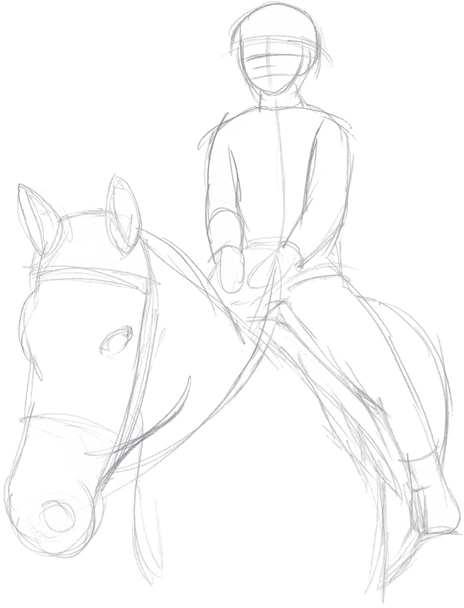
1 For this portrait of a girl on horseback, block in the basic shape of the horse first. Then work out the girl’s line of action: Her back is very straight, as she is firmly seated, but she still needs some movement and curvature in her head, neck, and body to keep her balanced. When the line of action is established, block in the basic shapes of the girl.
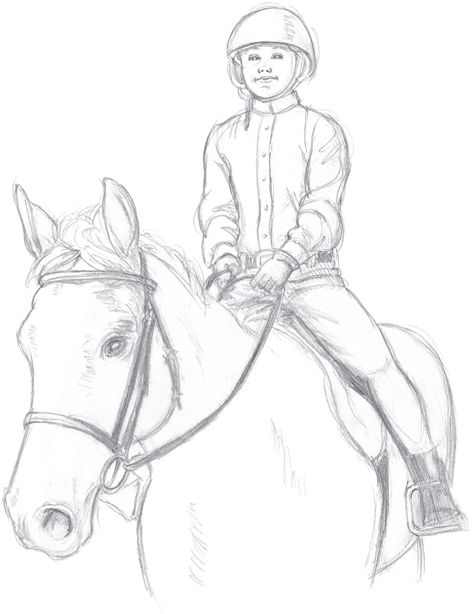
2 Only after establishing the gesture of the drawing should you focus on refinement. Keep your action drawings fresh and spontaneous by limiting the details—your drawing will have both more fluidity and greater impact if it is not overworked.
1 This boy is leaning back on his right leg, getting ready to throw a football. His left arm and leg are used for counter-balance. The line of action flows down his spine and through his left leg, but there is a secondary line of action running down his right leg.

2 After establishing the basic shapes, add simple details that accompany the action. The folds of his clothes and direction of his gaze correspond with the pose.

1 A pose of this nature can be challenging because skateboarders often appear to defy gravity! But just record this action the same as you would any other: Draw the line of action down the spine, sharply curving through the left thigh. Then add the arms and the right leg for balance. Keep the head in line with the spine.
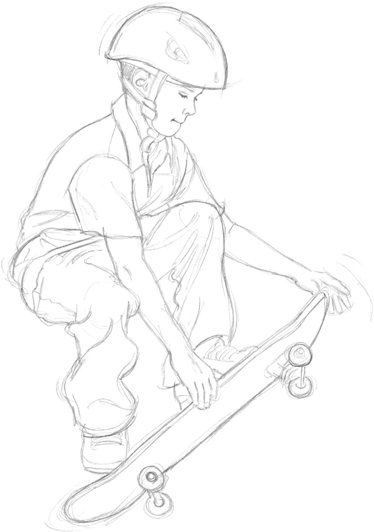
2 Here again, minimal shading and detail are the best ways to keep the movement from looking stiff. Loose speed lines around the boy’s helmet, hand, and skateboard also indicate motion.

1 Train your eye to observe carefully so that you can capture subtle motions, such as this child picking a flower. As she crouches, her weight is evenly balanced on both feet, with the line of action starting at the top of her head and curving down her spine.
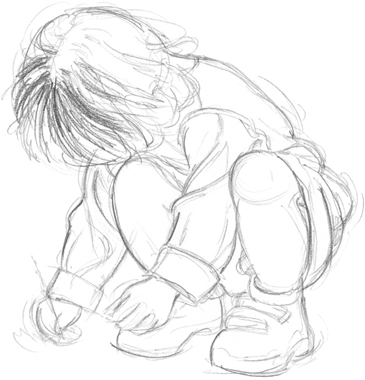
2 Keep the action of the pose alive with loose details. Folds in the clothing and a natural tousle of the hair also enhance the sense of movement.

1 This ballet pose has two lines of action: The main line curves with the torso and runs down the left leg; the secondary line starts at the left hand and flows across the chest, down the right arm, and through the right hand. Most of the weight is on the left leg; the right leg is extended for balance. If the basic gesture isn’t correct, the figure will look like she’s falling over.
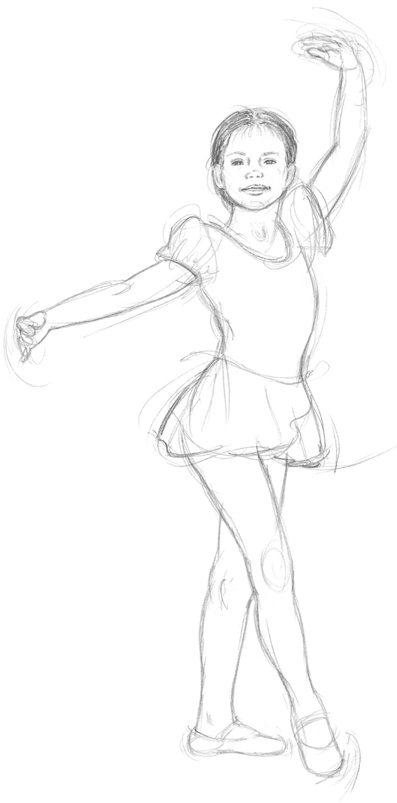
2 When blocking in and refining the shapes of a complicated pose such as this one, it’s important to keep in mind many of the concepts you’ve learned in this book, including the head and body proportions and how foreshortening affects them.
